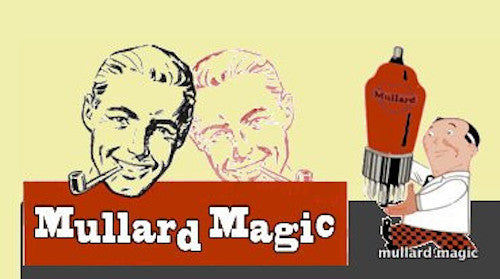THE GREAT MULLARD MAGIC BLOG

AN INTRODUCTION TO CATHODE RAY TUBE (CRT) MANUF...
Well, a CRT is a thermionic electron tube so I thought we would follow our popular blog series on how valves were made with a similar one detailing the manufacturing...
AN INTRODUCTION TO CATHODE RAY TUBE (CRT) MANUF...
Well, a CRT is a thermionic electron tube so I thought we would follow our popular blog series on how valves were made with a similar one detailing the manufacturing...

MULLARD LONG LIFE TINTED TELEVISION PICTURE TUBES
Today's evocative photo shows Mulard Long Life picture tubes undergoing life tests at the Mitcham plant sometime in mid 1952. On the test rig, applied voltages were regulated...
MULLARD LONG LIFE TINTED TELEVISION PICTURE TUBES
Today's evocative photo shows Mulard Long Life picture tubes undergoing life tests at the Mitcham plant sometime in mid 1952. On the test rig, applied voltages were regulated...
